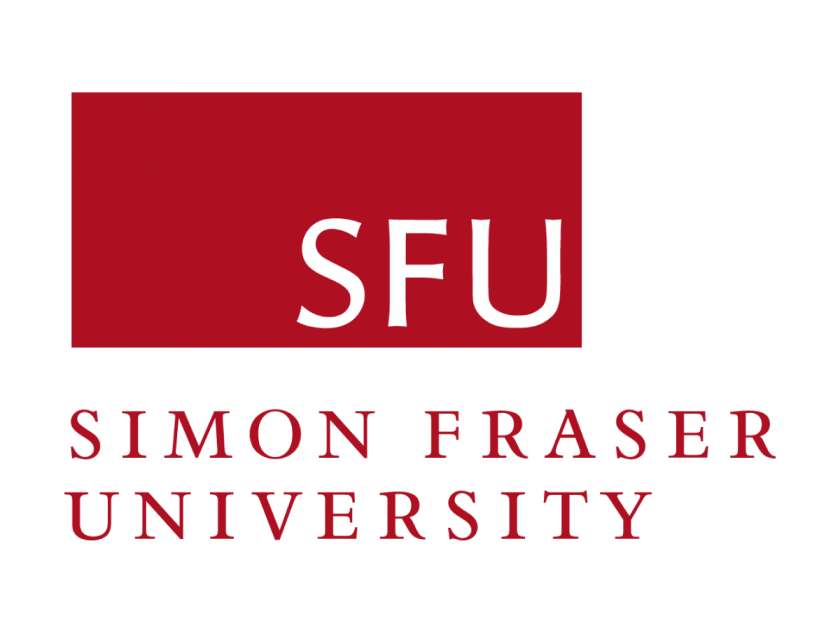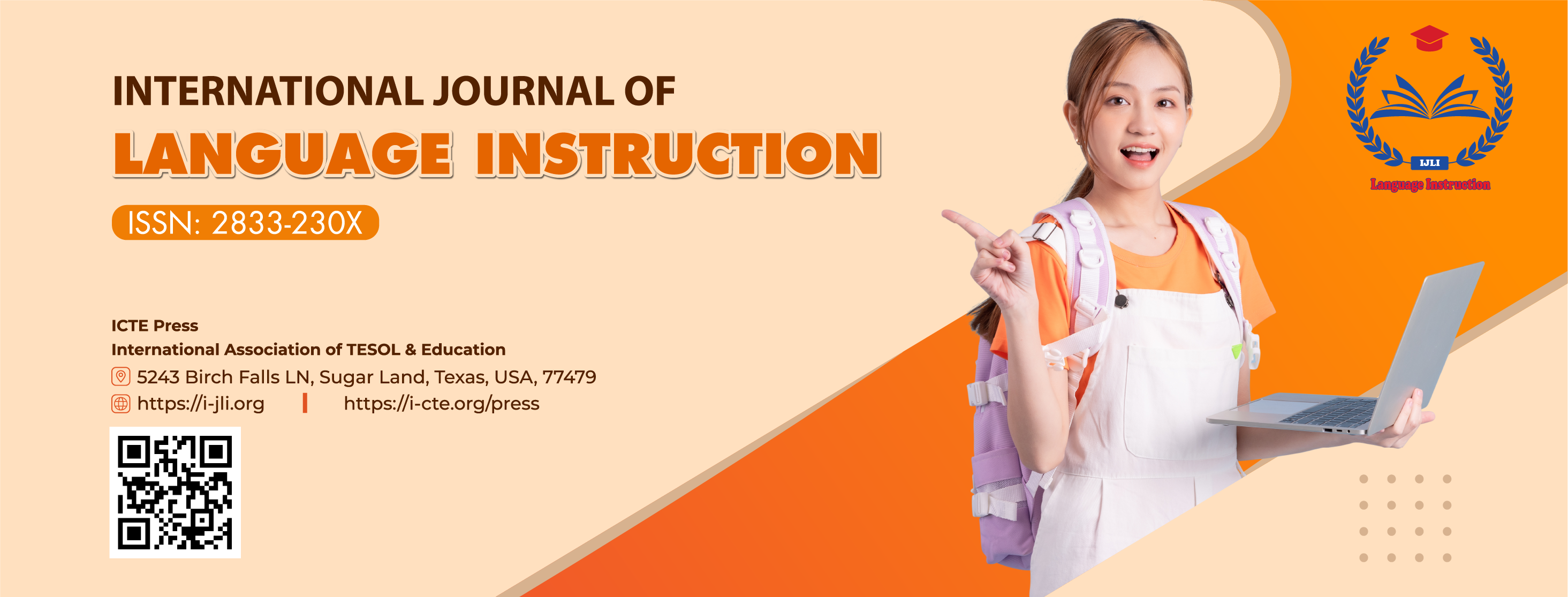Investigation into Difficulties in Public Speaking among English-majored Students at University of Phan Thiet
DOI:
https://doi.org/10.54855/ijli.24312Keywords:
CLT approach, English speaking skills, classroom activities, interactionAbstract
The main aim of the study was to identify the difficulties in public speaking skills among English-majored students at the University of Phan Thiet. A total of 60 students were asked to participate in the research. The findings revealed that students have clear perceptions about the significant roles and the high difficulty level of public speaking skills. Furthermore, of all the difficulties students encountered when speaking in front of many people, the two most common problems were fear of making mistakes and being observed, which wore down their confidence. Based on the findings, several suggestions were made to improve students' public speaking skills. The findings in this study were also expected to be beneficial to teachers, educators, and schools in improving the experience of students when taking public speaking courses.References
Alnuzaili, S. E., & Uddin, N. (2020). Dealing with anxiety in foreign language learning classroom. Journal of Language teaching and research, 11(2). DOI: http://dx.doi.org/10.17507/jltr.1102.15
Baumayer, K (2018). What is Public Speaking and Why Do I Need to Do It? https://study.com/academy/lesson/what-is-public-speaking-and-why-do-i-need-it.html.
Boonkit, K. (2010). Enhancing the development of speaking skills for non-native speakers of English. Procedia - Social and Behavioral Sciences, 2(2), 1305–1309. https://doi.org/https://doi.org/10.1016/j.sbspro.2010.03.191
Brown, D. H. (2000). Principles of language learning and teaching. London: Prentice Hall Regents.
Chen, Y. (2005). Barriers to Acquiring Listening Strategies for EFL Learners and Their Pedagogical Implications, TESL-EJ, 8 (4), pp. 1-25
Farrell, R. (2011). Soft skills all great leaders should have. CareerBuilder. http://www. careerbuilder.com/Article/CB-2335-Leadership-Management-Soft-skillsall-great-leaders-should-have/
Forman, R. (2005). Teaching EFL in Thailand: A Bilingual Study.Ph.D. Thesis. University of Technology, Sydney. Retrieved March 25, 2008, from http://utsescholarship.lib.uts.edu.au/dspace/handle/2100/552
Fraenkel, J. R., Wallen, N. E., & Hyun, H. H. (2012). How to design and evaluate research in education (8th ed.). New York: Mc Graw Hill.
Fiadzawoo, J. K. (2015). Investigating speaking anxiety among adult Foreign Language (French) learners in the Faculty of Education, UDS, Tamale. Education Research Journal, 5(2), 14-26.
Horwitz, E. K. (2001). Language anxiety and achievement. Annual Review of Applied. Linguistics, 21 (1), 112-126.
Kant, L. (2000). Public speaking anxiety. Tennessee: University of Tennessee.
Kirkwood, C. K., & Melton, S. T. (2002). Anxiety disorders. In J. T. Dipiro, R. L. Talbert, G. C. Yee, G. R. Matzke, B. G. Wells, L. M. Posey, Pharmacotherapy: A pathophysiologic approach (5th ed.). New York, NY: McGraw-Hill.
Kondo, D. S., & Ying-Ling, Y. (2004). Strategies for coping with language anxiety: the case of students of English in Japan. ELT Journal. 58(3), 258-265.
Lamerton, J. (2001). Public Speaking (Everything You Need To Know). London: HarperCollins Publisher.
Liu, M. (2007). Anxiety in Chinese EFL students at different proficiency levels. System, 34(3).
Lucas, S., Simeon, L., & Wattam, J. (2019). The Art of Public Speaking, 13th ed. Toronto: McGraw-Hill Ryerson.
MacIntyre, P. D. (1998). Language anxiety: A review of research for language teachers. Boston: McGraw-Hill.
Nunan, D. (1999). Second language teaching and learning. USA: Heinle.
Nguyen, T. D. T., & Pham, V. P. H. (2022). Effects of Using Technology to Support Students in Developing Speaking Skills. International Journal of Language Instruction, 1(1), 1–8. https://doi.org/10.54855/ijli.22111
Santos, K. P. D., Ribeiro, V. V., Siqueira, L. T. D., Brugnara, L. C., Rosa, I. C. B., & Dassiê-Leite, A. P. (2022). Does shyness influence the Self-Perception of vocal symptoms, public speaking, and daily communication? Journal of Voice, 36(1), 54–58. https://doi.org/10.1016/j.jvoice.2020.02.015
Schreiber, L., & Hartranft, M. (2017). Introduction to public speaking. In T. S. Rice, Fundamentals of public speaking. California: College of the Canyons.
Slagell, A. (2009). 21st century communication: a reference handbook. California: Thousand Oak.
Steele, J. (2010). The Definition of Public Speaking. Retrieved from https://www.speechmastery.com/definition-of-public-speaking.html
Thomas, R. M. (2003). Blending Qualitative & Quantitative Research Methods in Theses and Dissertations. ERIC Journal. ED482271, p. 246
Tsai, C. H., & Chang, I. (2013). The study on motivation and anxiety of English learning of students at a Taiwan Technical University. International Journal of English Language Teaching, 1(1), 24-41.
Tuyen, N. T. M., & Dan, T. C. (2021, January). Obstacles and Solutions to English Public Speaking from EFL Students’ Voices: A Case at Can Tho University, Vietnam. In Proceeding the First International Conference on Government Education Management and Tourism, 1(1), 389-401.
Tuong, H. G. B. (2022). TVU Non-English Majors’ Attitudes toward Utilizing Oral Presentations to Overcome Speaking Difficulties in English Classroom. International Journal of Language Instruction, 1(1), 99-119.
Van, T. T., Anh, C. H., Bao, T. N. D., Thuy, T. N.T., Vinh, L. T. C, V., Long T.C. (2021). The fear of public speaking in Vietnamese pedagogy freshmen. Journal for Educators, Teachers and Trainers, 12(4). 60 – 66.
Wisker, G. (2001). The postgraduate research handbook. U.K.: Palgrave.
Vo, T. A. D. (2022). Student’s Attitudes towards Communicative Activities on EFL Student’s Speaking Performance . International Journal of Language Instruction, 1(1), 143–154. https://doi.org/10.54855/ijli.221112
Downloads
Published
Issue
Section
License
Copyright (c) 2024 Nguyen Thanh Tan, Tong Thi Truong Nhung

This work is licensed under a Creative Commons Attribution 4.0 International License.
The copyright of all articles published in the International Journal of Language Instruction (ijli) remains with the Authors, i.e. Authors retain full ownership of their article. Permitted third-party reuse of the open access articles is defined by the applicable Creative Commons (CC) end-user license which is accepted by the Authors upon submission of their paper. All articles in the ijli are published under the CC BY-NC 4.0 license, meaning that end users can freely share an article (i.e. copy and redistribute the material in any medium or format) and adapt it (i.e. remix, transform and build upon the material) on the condition that proper attribution is given (i.e. appropriate credit, a link to the applicable license and an indication if any changes were made; all in such a way that does not suggest that the licensor endorses the user or the use) and the material is only used for non-commercial purposes.
Authors are able to enter into separate, additional contractual arrangements for the non-exclusive distribution of the journal's published version of the work (e.g., post it to an institutional repository, in a journal or publish it in a book), with an acknowledgment of its initial publication in this journal.











